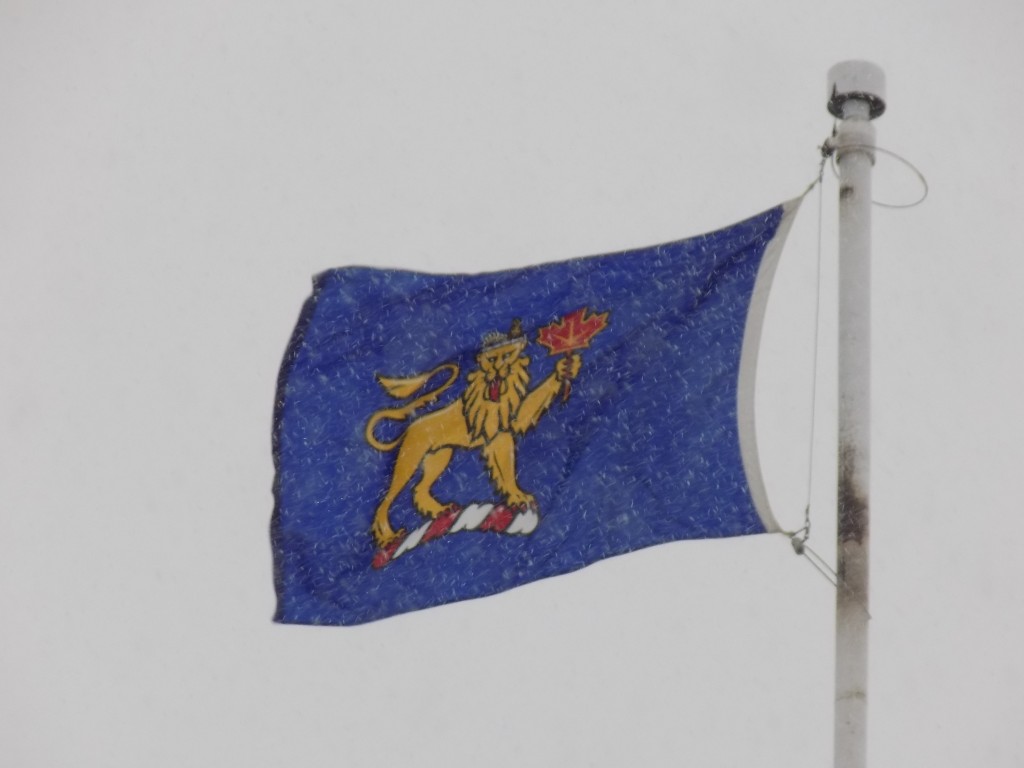Canada’s PM Justin Trudeau “shuffles” his cabinet ministers

The Governor-General’s flag atop Rideau Hall in Ottawa. The Governor-General, currently His Excellency David Johnston, represents the Queen and is responsible for swearing in the federal cabinet. The flag only flies when the Governor-General is home. Photo: James Morgan
The following has nothing to do with kitchen cupboards, it’s about cabinets of the political kind. While Donald Trump’s choices for cabinet positions go through the confirmation process in Washington, Prime Minister Justin Trudeau has been refinishing his own cabinet in Canada. In the U.S., the President appoints cabinet members who usually have already served in roles within the government, military, or business.
In Canada, the Prime Minister selects the cabinet from among the elected Members of Parliament (MP) in his party. Every member of the Canadian cabinet also has a seat in the House of Commons representing a district somewhere across the country.
The ministers serve at the discretion of the Prime Minister. When a government is newly elected, a whole new slate of cabinet ministers is appointed. Usually after a year or two in office, Prime Ministers decide to “shuffle” the cabinet. Ministers who have performed well in small departments are promoted, some remain where they were. Underperformers or those seeking an exit from politics are removed from cabinet.
The current cabinet shuffle had examples of all three. Stephane Dion, who served as Minister of Foreign Affairs, was removed from cabinet and will remain an MP for now, but the Prime Minister has offered him a couple of diplomatic posts. John McCallum was removed as Immigration Minister and will become Canada’s next ambassador to China. Maryam Monsef, who previously oversaw efforts for electoral reform, was transferred to the Department of the Status of Women. Dion’s effectiveness and communications were often questioned, especially after he approved a controversial deal to sell arms to Saudi Arabia. McCallum oversaw the arrival of over 30,000 Syrian refugees in Canada. His transfer to Beijing is widely seen as a way of helping the Trudeau government’s plans to begin free trade talks with China. Monsef came under sharp criticism for her handling of the electoral reform file.
The new Minister of Foreign Affairs is Chrystia Freeland. The former journalist previously served as International Trade Minister. Freeland will keep the responsibility though for trade and relations with the United States in order to meet any challenges that could from the Trump administration on those issues. Her approach to Russia should be interesting, too, since President Vladimir Putin banned her from the country in retaliation for sanctions imposed by Canada. Ahmed D. Hussen took over Immigration from John McCallum. The interesting fact about him is that he actually is an immigrant. He arrived in Canada as a teenage refugee from Somalia. Karina Gould, a talented MP from Burlington, Ontario, took over the difficult electoral reform file. It’s going to be her job to decide how to change Canada’s federal voting system. Other ministers are staying in place, including in key departments like Bill Morneau in Finance and Harjit Sajjan in Defence.
Cabinet ministers in Canada are designated by the Prime Minister, but are technically sworn in by the Queen. Since she doesn’t live in Canada, the Governor-General serves as her representative. New ministers go to Rideau Hall, the Governor-General’s Ottawa residence and are sworn in. Unlike in the US, there are no confirmation hearings. If a minister needs to be replaced, it’s up to the Prime Minister to make that decision by having a cabinet shuffle like the one which just took place.
Tags: canada, Governor-General, politics







